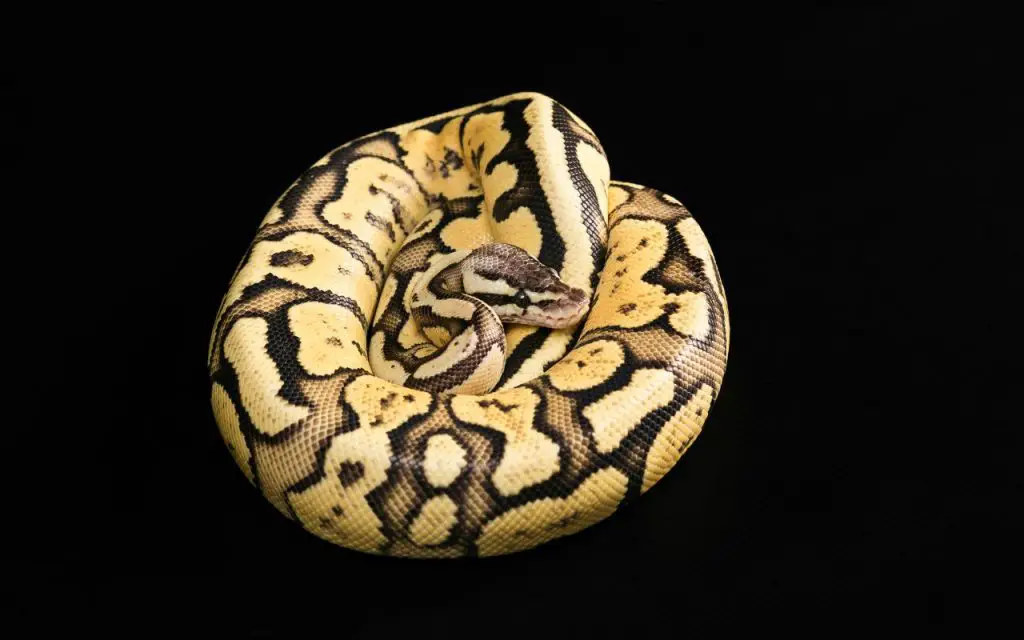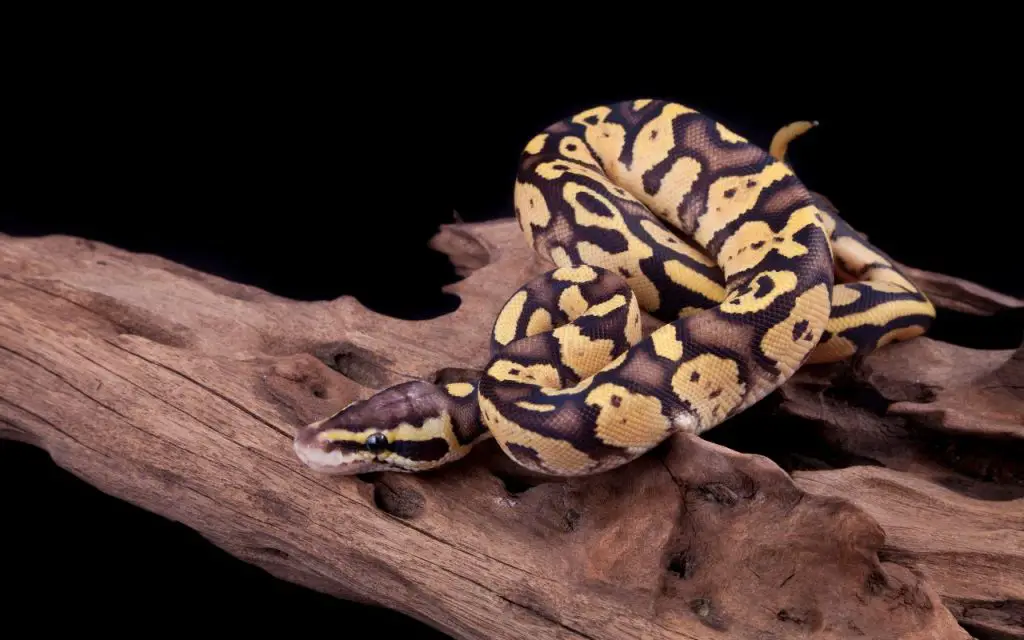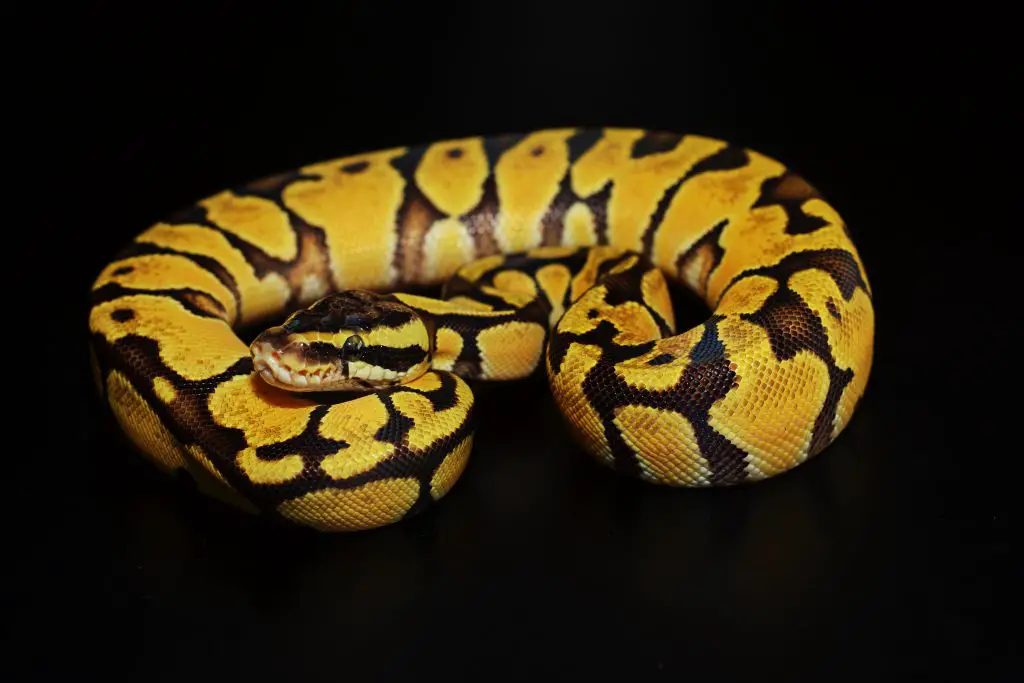Ball Python lighting can be simple: they’re mostly nocturnal after all! Let’s dive into this slightly controversial subject and learn a little more…
Ball Pythons are a nocturnal and sometimes crepuscular species that associates bright light with danger. So why do some sources keep telling you to buy UV lighting for them? Sadly, the answer is to make a quick buck out of you, or because they have limited knowlege on the natural history, niche and behavior of the species.

Ball Pythons (Python regius) have become a popular choice as a pet around the world. They are non-venomous and have non-complicated care and dietary requirements.
Although the Corn Snake is the most preferred slithery pet choice in some regions, the Ball Python is quickly becoming an equal contender.
With all this popularity – you’d think the information available on their care would be logical and factual, right? Well no, because when a pet becomes popular it becomes a commercial entity as much as a living animal.
That means there’s a huge financial incentive now to convince you to buy lights for your Ball Python – even if it doesn’t really need them. That’s also a huge incentive for people to challenge perceived knowledge so that they can position themselves as the new “experts”.
Let’s take a closer look at some of the questions surrounding Ball Python lighting.

Do ball pythons need light at night?
Ball Pythons do not require light at night as they are nocturnal. They do, however, require a heat source. If you use a bright heat lamp, you will also need a heat emitter, radiant heat panel, or heat mat to keep your pet warm at night.
Do ball pythons like light or dark?
Ball Pythons come out of their burrow or other hole only after dark to hunt for prey. Due to the harsh conditions in the habitats they come from, they avoid coming out during the day when most predators are active.
Birds of prey, Monitor Lizards, Olive Baboons and even other snakes like to eat Ball Pythons when given the chance.
They do not require sunlight, other than as a heat source. Nonetheless, there are rampant myths about the Ball Python absorbing Vitamin D from the sun.
These are usually fabricated to help the sales of unnecessary Vitamin D supplements and UVB bulbs, or to try to put people off keeping the species by making it sound harder or more expensive.
The most common argument is “there’s no evidence Ball Pythons can’t absorb Vitamin D from the sun” – which is kind of funny because it also means there’s no evidence that they can, or that they need to!
(*In my personal opinion, they probably can, they just don’t need to because they get everything they need from healthy prey)
In fact, what we have hard evidence of so far is that Ball Pythons have high blood serum levels of Vitamin D3 before being exposed to UV light!
Other resources suggest that they like to bask in the sun, on the contrary, this happens only when they are cold and need to warm up, or when brooding eggs. Nocturnal snakes do not enjoy the sunlight and do so out of necessity.
Ball python night light
The kinds lights available for Ball Pythons are Incandescent, Ultraviolet, LEDs, and Halogens but not all are suitable or beneficial. All these have a maximum and minimum recommended distance for effectiveness and safety.
- Incandescent and LEDs emit light but little heat
- Halogen and mercury vapor bulbs emit both heat and light. These need to be regulated or they can cause overexposure to light.
- Ultraviolet lights help in simulating a snake’s natural habitat by providing UVB and UVA. Some halogen or mercury vapors bulbs also have an ultraviolet component
More to the point, none of these should be left on at night – your snake will be most comfortable in complete darkness between the hours of 7 or 8PM and 7 or 8AM.
Do snakes need a heat lamp at night?
Ball Pythons will require a heat lamp or a radiant heat panel/ deep heat projector at night only if the enclosure is 3ft(1m) or more. Otherwise, a heat mat will suffice. Please remember that a heat mat will go under your glass tank or tub enclosure and not inside.
Any direct contact with the heat mat with your pet may cause burns and injuries. Always leave a little gap between your mat and the glass, too much heat contact might crack the glass. You also need to use them with a pulse-proportional or on/off thermostat.
An important thing to note is that Python needs a break from light, especially at night, if not it will slowly stop feeding and try to escape.
To ensure this, it is recommended to use heat lamps that emit no light (ceramic heat emitter) or emit a very low red light. These are called ‘night-time heat bulbs’. Snakes can see red light, but it’s still better to have one of these than no heat all night.

What’s the best heat source for a ball python?
A heat mat is the most commonly used source of heat for Ball Python. They are cheap and use less wattage when hooked up to the thermostat. Their only disadvantage is that they work best with plastic tubs. This is a viable and recommended option for long-term keepers.
However, this is not the only option. If you wish, you can create a larger enclosure, like a vivarium, and use a different heat source.
A heat lamp/ deep heat projector/ radiant heat panel is recommended for the vivarium since they do a better job of maintaining ambient temperature.

Ball python temperature
The Ball Python is poikilothermic and cannot regulate body temperature without an external heat source. The temperature must be stable and constant through the night and any sudden dip or fluctuation will cause health issues.
It is recommended to invest in a good thermostat and timer to monitor these changes.
Listed below are the temperature ranges to keep in mind.
- Warm side temperature: 89 – 92 F (31.6 – 33.3 C)
- Cool side temperature: 80 – 81 F (26.6 – 27 C)
- Nighttime temperature: drop by around 4F (2C) at both ends.
Best light for a ball python
The best light for a Ball Python is one that can give an even ambient temperature with or without producing UVB. The Exo Terra Repti-Glo is a recommended option.
Take care to provide a cool area and a warm area within the Ball Python enclosure. Do not heat it evenly.
If your room has a strong LED light that lights up the Ball Python enclosure for viewing, then there is no need for a separate light source for the enclosure. Read further to see the different heating the lighting combinations for your pet Ball Python.
Red light for a ball python
Red lights or “night time heat lamps” have long been used for nocturnal snakes.
Advantages of using red light-
- Reduces light exposure
- provides warmth 24/7
Disadvantages of using a red light –
- Snakes can see red light!
- some Ball Pythons will be annoyed by the constant light, in which case a ceramic heat emitter is a better option. Some don’t care – but others really do.

Do ball pythons need UVB?
Ball Pythons do not need UVB as they are nocturnal snakes. This is a myth created by misquoting scientific research to increase sales of UVB.
Snakes can detect UV rays and will absorb light and warmth when in the wild. When in captivity the other sources of heat (like a ceramic heat emitter or heating mat or deep heat projector) in their enclosure will negate the use of UVB, making it redundant.
Nevertheless, it is not harmful to expose them for a few hours in the daytime to UVB. You can find more on this here.
What light is required for a ball python?
Ball Pythons require ambient light to help maintain there circadian rythm. This can be light from a window, or a light turned on in the room they’re kept in. It should be on for 12 hours a day. It doesn’t have to be a light source inside their enclosure.
It’s really just a case of making sure your snake can tell what time of day it is, so that it knows when to hunt, sleep or hide.
FAQ relating to ball python lighting
What lighting do ball pythons need?
Any light which provides heat is good. Too much light exposure can cause stress in Pythons, so choose a light that has the option of dimming and regulation.
A 12-hour cycle is good for Ball Pythons. For example, turn on the light from 7 am to 7 pm. This mimics sun up and sun down and does not stress the snake by too much light exposure.
Do ball pythons need a lamp at night?
Yes, for temperature regulation, not for lighting. It is a common misconception that these snakes bask in the sun for enjoyment. The Ball Python is a creature of the night and will only spend time in light for warmth.
If there is a continuous 24hr light source in the enclosure it will not mimic the day-to-night cycle. Ball Pythons can detect all light sources and rays. If the day-to-night cycle is not followed with artificial light, it may affect the feeding habits of the Ball python.
Can I leave my heat lamp on all night ball python?
If your heat lamp doesn’t emit light at night then yes, otherwise a heat mat is better for nighttime. A steady temperature must be maintained throughout the night.
You can also dim the lights during the night instead of keeping the same luminosity at all times. Do not keep a light-emitting lamp on at night, it will harm the Ball Python.
Do ball pythons need to be misted?
An average humidity between the range of 55%-65% must be maintained in the enclosure year-round to help in the shedding process. Furthermore, some research suggests that very low ( -40%) and very high (+80%) can cause respiratory disease or scale rot.
Orchid bark, coconut fiber, cypress mulch, and sphagnum moss are all great for raising humidity, but mist the enclosure if these are not enough. A fluctuation in humidity will cause issues with shedding. Invest in a good humidity monitoring device.
Also on this topic:
For more on temperatures in general:
Back to the heat and lighting topic page
